2023 IB Chemistry Syllabus Update: What’s Changed?
Summary Of Main Changes to the Programme
- The 2023 International Baccalaureate chemistry syllabus has seen a considerable reduction in content compared to the 2014 version.
- The options (Materials, Biochemistry, Energy, and Medicinal Chemistry) have been removed and a small amount of their content merged with the new, core syllabus.
- Instead of traditional modules like ‘Atomic structure’, ‘Organic chemistry’. and ‘Equilibrium’, all content is now organized under two main themes: structure and reactivity, establishing a conceptual relationship between them.
- The new syllabus places greater focus on skills, categorized under Tools and the Inquiry process. These skills are explicitly connected to the course through linking questions in each subtopic.
- The ‘essential ideas’ in the 2014 syllabus have been replaced with ‘guiding questions’ for each subtopic, framing the learning objectives and offering a broader scope for course planning and structure.
- The new course is designed to offer more flexibility in planning pathways, moving away from a linear topic sequence to a thematic approach based on structure and reactivity.
- Emphasis is placed on building a logical progression of knowledge throughout the course.
- There are several revisions to terminology to align the syllabus with IUPAC recommendations (such as ‘coordination bond’ rather than ‘coordinate bond’).
- The component previously known as ‘Internal Assessment’ is now termed ‘Scientific Investigation’.
This restructured syllabus aims to provide a more integrated and conceptually driven approach to learning chemistry, focusing on developing practical skills and a deeper conceptual understanding of the subject.
Contents
- Summary Of Main Changes to the Programme
- Changes To the Exam Format
- Assessment Of Skills in IB Chemistry
- Changes to the Internal Assessment
- Changes to the IB Chemistry Data Booklet
- New Or Modified Content in the 2023 Syllabus
- Content Added/Merged from the Options
- Content Moved from SL To HL
- Content Moved from HL To SL
- Content Deleted in the 2023 Syllabus
- Thoughts on The New 2023 IB Chemistry Syllabus
- 8 Comments
Changes To the Exam Format
Use of a calculator and the data booklet is now permitted for all papers.
Standard Level (SL) Chemistry Exam (First Assessment May 2025)
The exam comprises two external assessments and one internal assessment.
External Assessment (80% of total score):
- Paper 1 (1 hour 30 minutes): This paper is divided into two parts. Part 1A consists of multiple-choice questions, and Part 1B includes data-based questions, together accounting for 36% of the total score.
- Paper 2 (1 hour 30 minutes): This paper features short-answer and extended-response questions, contributing 44% to the total score.
- Internal Assessment (20% of total score): This component is a scientific investigation, assessed internally by teachers and moderated externally by the IB.
Higher Level (HL) Chemistry Exam (First Assessment May 2025)
Overall Structure: Similar to SL but with extended duration and content.
External Assessment (80% of total score):
- Paper 1 (2 hours): Includes multiple-choice and data-based questions, making up 36% of the total score.
- Paper 2 (2 hours 30 minutes): Contains short-answer and extended-response questions, accounting for 44% of the total score.
- Internal Assessment (20% of total score): This is also a scientific investigation, assessed in the same manner as in SL.
The exams emphasize a balance between theoretical knowledge and practical scientific investigation.
The structure of the exams reflects a shift towards a more integrated and concept-based approach to learning and assessment in chemistry.
This new format aims to provide a comprehensive evaluation of students’ understanding of chemistry, balancing theoretical knowledge with practical scientific skills.
Assessment Of Skills in IB Chemistry
The 2023 Guide introduces a significant enhancement in outlining the necessary mathematical and ICT skills for students, a feature that, while present, was less explicitly detailed in the 2014 Guide. These skills, crucial for the syllabus, are not assigned a specific portion of the total teaching hours – 110 hours for Standard Level (SL) and 180 hours for Higher Level (HL).
However, they are integral to both internal and external assessments. The skills encompass a range of areas including Tools (which cover Experimental Techniques, and Technology & Mathematics) and the Inquiry process (involving Exploring & Designing, Collecting & Processing data, and Concluding & Evaluation).
Changes to the Internal Assessment
The new IB chemistry syllabus introduces a significant change in the evaluation of the internal assessment research, now termed “The scientific investigation.”
Previously known as “The individual scientific investigation” in the 2014 Guide, it continues to contribute 20% to the total assessment score, complementing the 80% from external assessments. Notably, the assessment now revolves around four criteria (Research design, Data analysis, Conclusion, and Evaluation), each holding equal importance with 6 marks apiece. This adjustment leads to a total of 24 raw marks, which are then scaled to account for the 20% internal assessment (IA) weighting.
The restructuring of these criteria, especially with half of the marks dedicated to Conclusion and Evaluation, underscores the increased focus on advanced cognitive skills.
The latest guidelines maintain the 10-hour time allocation for the research project.
However, they introduce a more flexible approach to collaboration. Students now have the option to work alongside one or two peers. While collaboration is encouraged, it’s crucial that each student maintains a unique research question. They can share methodologies, but the variables (either independent or dependent) and the data must be distinct for each student, ensuring the individuality of each research project.
The structure of the written report has also undergone changes.
The maximum word count is set at 3,000 words, and the 2023 guide provides specific instructions on what constitutes a word in this context. This is a shift from the 2014 Guide, which based the report length on a page range of 6-12 pages. The new word count guideline offers a clearer framework for students in structuring their reports.
Changes to the IB Chemistry Data Booklet
The revised data booklet for first assessment 2025 has been significantly condensed, featuring only 23 sections, a reduction from the 38 sections in the 2014 data booklet. This streamlining primarily results from the elimination of the options, which took up a lot of space in the data booklet.
Notable changes and additions in the new booklet include Section 2, which now encompasses Physical constants with the inclusion of elementary masses, Section 3 on Metric (SI) multipliers, and Section 4, which focuses on Unit conversions and standard conditions. The standard temperature has been updated to 273.15 K for STP, and 298.15 K SATP.
Certain sections from the 2016 booklet have also been cut, such as ‘The strengths of organic acids and bases’, but it seems from the specimen papers that relevant data will now be provided as part of the question stem. Presumably the decision was made to reduce the amount of data students need to retrieve in the exams.
New Or Modified Content in the 2023 Syllabus
| 2023 Sub-topic | 2014 Specification point(s) | Changes |
| Structure 1.1—Introduction to the particulate nature of matter | 1.1 Introduction to the particulate nature of matter and chemical change | Solvation, filtration, recrystallization, evaporation, distillation and paper chromatography should be covered. |
| Structure 1.3—Electron configurations | 12.1 Electrons in atoms | The symbol for frequency is now f, not v (so E = hf). |
| Structure 1.4—Counting particles by mass: The mole | 1.2 The mole concept | NA is now exclusively used for the Avogadro constant (L no longer used). |
| Structure 2.1—The ionic model | 4.1 Ionic bonding and structure | Binary inorganic compounds are named using the format cation – anion, with the anion taking the -ide suffix. Student should know NH4+, OH–, NO3–, HCO3–, CO32-, SO42-, and PO43-. |
| Structure 2.2—The covalent model | 4.2. Covalent bonding
4.3 Covalent structures |
Lewis structures now called Lewis formula (though IUPAC still uses Lewis structure and ‘electron dot’ structure) |
| Structure 2.2—The covalent model | 4.3 Covalent structures | Coordinate bonds are now called ‘coordination bonds’ (I guess in keeping with IUPAC conventions, which also considers ‘dative bonds’ obsolete.) |
| Structure 2.3—The metallic model | None | Students need to explain the properties of transition metals in terms of their delocalised d electrons |
| Structure 3.1—The periodic table: Classification of elements | 3.2 Periodic trends | Appears to be a new definition of periodicity, but the 2024 syllabus states “Only examples of general trends across periods and down groups are required”? |
| Structure 3.1—The periodic table: Classification of elements | 3.2 Periodic trends 8.5 Acid deposition |
The 2014 syllabus stated, “Construction of equations to explain the pH changes for reactions of Na2O, MgO, P4O10, and the oxides of nitrogen and sulfur with water.” Concept of ocean acidification is new. |
| Structure 3.1—The periodic table: Classification of elements | 9.1 Oxidation and reduction | “Oxidation state” and “oxidation number” are now used interchangeably (they always were?!). Generic names for oxyanions containing elements showing variable oxidation state may be used (e.g. nitrate, nitrite, sulfate, sulfite). |
| Structure 3.2—Functional groups: Classification of organic compounds | 10.1 Fundamentals of organic chemistry | “Halogeno” has been added to the names of functional groups, and “amido” replaces “carboxamide” (defined by IUPAC as RCONH2, where RCO- is derived from a carboxylic acid). |
| Structure 3.2—Functional groups: Classification of organic compounds | 10.1 Fundamentals of organic chemistry | Structural isomers widened to include position and functional group isomers. |
| Reactivity 1.1—Measuring enthalpy changes | 5.1 Measuring energy changes 5.3 Bond enthalpies |
Specific instructions are given for labelling energy profile diagram axes (x = reaction coordinate, y = potential energy) – note these were however formerly called “potential energy profiles”. |
| Reactivity 1.1—Measuring enthalpy changes | 5.1 Measuring energy changes | Capital ‘Q’ is now preferred instead of ‘q’ for heat energy transferred, and ΔH = − Q/n makes an appearance (presumably also ΔH = +Q/n for endothermic reactions?) |
| Reactivity 1.2—Energy cycles in reactions | 15.1 Energy cycles | Construction of Born-Haber cycles no longer needed. |
| Reactivity 1.4—Entropy and spontaneity | 15.2 Entropy and spontaneity | It’s now just “Gibbs energy” (no longer free!), and the equation ΔG = ΔGo + RT lnQ (relating Gibbs energy to Q, the reaction quotient) is new. |
| Reactivity 2.2—How fast? The rate of chemical change | 16.1 Rate expression and reaction mechanism 20.1 Types of organic reactions(though not explicitly referenced) |
Students should now distinguish between intermediates and transition states, and recognise them on energy profiles. I think the distinction was always made by teachers anyway in discussing, e.g., SN1 vs. SN2. |
| Reactivity 2.2—How fast? The rate of chemical change | 16.1 Rate expression and reaction mechanism 20.1 Types of organic reactions |
“Termolecular” now included. “Unimolecular” and “bimolecular” were referenced in the 2014 guide under HL nucleophilic substitution. |
| Reactivity 2.2—How fast? The rate of chemical change | 16.2 Activation energy | The constant A is now called the Arrhenius factor. |
| Reactivity 2.3—How far? The extent of chemical change | 7.1 Equilibrium | It seems K is now used to represent all equilibrium constants(?). The extent of reaction in terms of K’s magnitude should be covered. Stoichiometry is explicitly referenced in connection with the equilibrium law. |
| Reactivity 2.3—How far? The extent of chemical change | 7.1 Equilibrium | Application of Le Chatelier’s principle to heterogeneous equilibria is new. |
| Reactivity 2.3—How far? The extent of chemical change | 17.1 The equilibrium law | Students should use the approximation [reactant]initial ≈ [reactant]eqm when K is very small |
| Reactivity 3.1—Proton transfer reactions | 8.1 Theories of acids and bases | The difference between bases and alkalis should be known. |
| Reactivity 3.1—Proton transfer reactions | 8.2 Properties of acids and bases | Neutralisation reactions should include use of amine bases and organic acids. |
| Reactivity 3.1—Proton transfer reactions | 18.2 Calculations involving acids and bases | pOH was in 18.2, but the introduction of the pOH scale is new. |
| Reactivity 3.2—Electron transfer reactions | 9.1 Oxidation and reduction | The relative reactivity of metals observed in metal/metal ion displacement reactions does not need to be learned; appropriate data will be supplied in examination questions. |
| Reactivity 3.2—Electron transfer reactions | None. | Hydrogenation of alkenes and alkynes should be covered. |
| Reactivity 3.2—Electron transfer reactions | None. | The effects of concentration and the nature of the electrode are limited to the electrolysis of NaCl(aq) and CuSO4(aq) should now be covered. |
| Reactivity 3.3—Electron sharing reactions | 10.2 Functional group chemistry | ‘Fishhook’ arrows in radical mechanisms are now required. |
| Reactivity 3.3—Electron sharing reactions | 10.2 Functional group chemistry | The stability of alkanes, due to strong and non-polar C-H and C-C bonds, should be covered. |
| Reactivity 3.4—Electron-pair sharing reactions | 20.1 Types of organic reactions | Electrophilic substitution appears to have been widened to include general nucleophiles, E+, rather than just NO2+ |
Content Added/Merged from the Options
| 2023 Sub-topic | 2014 Specification point(s) | Changes |
| Structure 2.2—The covalent model | B.2 Proteins and enzymes B.9 Biological pigments |
Students need to understand the principles behind partitioning in chromatography and calculate/interpret Rf values. |
| Structure 2.4—From models to materials | 4.5 Metallic bonding | Alloys are now covered in the core syllabus. |
| Structure 2.4—From models to materials | A.1 Materials science introduction | Students now need to understand and use the bonding triangle to relate bonding type with physical properties. |
| Structure 2.4—From models to materials | 10.2 Functional group chemistry
A.1 Materials science introduction A.5 Polymers 10.2 Functional group chemistry A.1 Materials science introduction A.5 Polymers |
Natural and synthetic polymers should now be covered, including the common properties of plastics. |
| Structure 2.4—From models to materials | A.9 Condensation polymers | Polyamide and polyesters should now be included, and their hydrolysis. |
| Structure 3.1—The periodic table: Classification of elements | C.5 Environmental impact—global warming | Ocean acidification has been added to the core syllabus (“Discussion of pH changes in the ocean due to increased concentration of
carbon dioxide in the atmosphere.” in the 2014 guide) |
| Reactivity 1.3—Energy from fuels | C.2 Fossil fuels C.5 Environmental impact—global warming |
Pros and cons of fossil fuels, evaluating CO2 emissions for different fossil fuels, and the greenhouse effect should be covered. Incomplete combustion and energy released per unit mass should be included. |
| Reactivity 1.3—Energy from fuels | C.1 Energy sources C.4 Solar energy |
Biofuels and their production should be covered, together with their pros and cons. Renewable and non-renewable energy sources should be covered. The equation for photosynthesis is required. |
| Reactivity 1.3—Energy from fuels | 9.1 Oxidation and reduction C.6 Electrochemistry, rechargeable batteries and fuel cells |
The hydrogen and methanol fuel cell should be covered, including half-equations for the electrode reactions. |
| Reactivity 2.1—How much? The amount of chemical change | A.5 Polymers B.6 Biochemistry and the environment |
Atom economy now part of the core syllabus. |
| Reactivity 2.2—How fast? The rate of chemical change | 6.1 Collision theory and rates of reaction B.2 Proteins and enzymes |
Reference now made to enzymes as catalysts in the core syllabus. |
| Reactivity 3.1—Proton transfer reactions | B.7 Proteins and enzymes D.4 pH regulation of the stomach |
Calculation of buffer pH now required as part of core HL syllabus. The effect of dilution should be covered. |
| Reactivity 3.2—Electron transfer reactions | C.6 Electrochemistry, rechargeable batteries and fuel cells | Include discussion of advantages and disadvantages of fuel cells, primary cells and secondary cells. The pros and cons of fuel cells, primary cells, and secondary cells should be discussed. |
Content Moved from SL To HL
| 2023 Sub-topic | 2014 Specification point(s) | Changes |
| Structure 1.2—The nuclear atom | Topic 2: Atomic structure – 2.1 The nuclear atom | Mass spectrometry for calculation of RAM is now only assessed at HL. |
| Structure 2.2—The covalent model | 4.3 Covalent structures
14.1 Further aspects of covalent bonding and structure |
The concept of resonance is now HL only. |
| Structure 2.2—The covalent model | 10.1 Fundamentals of organic chemistry | Benzene is now only covered at HL. |
| Reactivity 1.2—Energy cycles in reactions | 5.1 Measuring energy changes
5.2 Hess’s Law |
The equations ΔH = ΣΔfH products – ΣΔfH reactants and ΔH = ΣΔcHreactants – ΣΔcH products are now given in the data booklet. |
| Reactivity 2.3—How far? The extent of chemical change | 7.1 Equilibrium | Reaction quotient is now covered at HL only. |
| Structure 3.2—Functional groups: Classification of organic compounds | 11.3 Spectroscopic identification of organic compounds 21.1 Spectroscopic identification of organic compounds D.9 Drug detection and analysis |
Use of fragmentation in mass spectrometry now HL only. |
| Structure 3.2—Functional groups: Classification of organic compounds | 11.3 Spectroscopic identification of organic compounds 21.1 Spectroscopic identification of organic compounds D.9 Drug detection and analysis |
Use of IR spectroscopy in structure determination now HL only. |
| Structure 3.2—Functional groups: Classification of organic compounds | 11.3 Spectroscopic identification of organic compounds 21.1 Spectroscopic identification of organic compounds D.9 Drug detection and analysis |
Use of NMR spectroscopy in structure determination now HL only. |
| Structure 3.2—Functional groups: Classification of organic compounds | 11.3 Spectroscopic identification of organic compounds 21.1 Spectroscopic identification of organic compounds D.9 Drug detection and analysis |
Use of combined analytical techniques for structure determination now HL only. |
Content Moved from HL To SL
| 2023 Sub-topic | 2014 Specification point(s) | Changes |
| Structure 2.1—The ionic model | 4.1 Ionic bonding and structure 15.1 Energy cycles |
Lattice enthalpy is now covered at SL. |
| Reactivity 3.1—Proton transfer reactions | 18.3 pH curves | pH curves are now covered at SL. |
| Reactivity 3.2—Electron transfer reactions | 20.1 Types of organic reactions | Equations for reduction of carboxylic acids to primary alcohols (via aldehyde), and ketones to secondary alcohols, should be covered, including the role of hydride ions. |
| Reactivity 3.4—Electron-pair sharing reactions | 20.1 Types of organic reactions | Equations for nucleophilic substitution reactions should now be explained in terms of movement of electron pairs. |
| Reactivity 3.4—Electron-pair sharing reactions | 20.1 Types of organic reactions | Heterolytic fission should be understood and explained in terms of curly arrows. |
| Reactivity 3.4—Electron-pair sharing reactions | 20.1 Types of organic reactions | Partly moved from HL to SL (term electrophile was not previously used at SL). Neutral and positively-charged electrophiles and nucleophiles should be covered. |
| Reactivity 3.4—Electron-pair sharing reactions | 10.2 Functional group chemistry 20.1 Types of organic reactions |
Deducing equations for the reactions of alkenes with water (new), halogens, and hydrogen halides is now required. |
Content Deleted in the 2023 Syllabus
- Anything listed here is gone completely (rather than moved from SL to HL, or vice versa).
| 2014 Specification point(s) | Changes |
| 1.3 Reacting masses and volumes | ppm is no longer required as a unit of concentration. |
| 3.1 Periodic table | Lanthanides and actinoids are no longer required. |
| 3.2 Periodic trends | Reactivity trends for Group 1 metals and halogens no longer required. |
| 7.1 Equilibrium | The 2014 syllabus statements: “Determination of the relationship between different equilibrium constants (Kc) for the same reaction at the same temperature.” and “Relationship between Kc values for reactions that are multiples or inverses of one another should be covered.” are not required. |
| 8.1 Theories of acids and bases | The term amphiprotic is no longer required. |
| 8.5 Acid deposition | Nitrogen removed from the statement “Balancing the equations that describe the combustion of sulfur and nitrogen to their oxides and the subsequent formation of H2SO3, H2SO4, HNO2 and HNO3”. The 2014 statements “Distinction between the pre-combustion and post-combustion methods of reducing sulfur oxides emissions” and “Deduction of acid deposition equations for acid deposition with reactive metals and carbonates.” are not required. |
| 9.1 Oxidation and reduction | The 2014 syllabus statements: “The activity series ranks metals according to the ease with which they undergo oxidation” and “The Winkler Method can be used to measure biochemical oxygen demand (BOD), used as a measure of the degree of pollution in a water sample.”, and “Deduction of the feasibility of a redox reaction from the activity series or reaction data.” are no longer required. |
| 10.1 Fundamentals of organic chemistry | Arenes and nitriles are no longer listed as functional groups. |
| 10.2 Functional group chemistry | Esterification removed from the 2014 statement “Alcohols undergo nucleophilic substitution reactions with acids (also called esterification or condensation) and some undergo oxidation reactions.” |
| 11.1 Uncertainties and errors in measurement and results
11.2 Graphical techniques |
Although ostensibly deleted from the new 2023 syllabus, the applications and skills formerly covered by 11.1 and 11.2 now fall under the Tools and Inquiry processes. These should be integrated alongside the relevant syllabus topics. |
| 11.3 Spectroscopic identification of organic compounds | The 2014 statements “The degree of unsaturation or index of hydrogen deficiency (IHD) can be used to determine” and “Determination of the IHD from a molecular formula” are not required. |
| 13.1 First-row d-block elements | The following 2014 statements are no longer required:
|
| 13.2 Coloured complexes | The following 2014 statements are no longer required:
|
| 14.1 Further aspects of covalent bonding and structure | The following 2014 statements are no longer required:
|
| 15.1 Energy cycles | The following 2014 statements are no longer required:
In the 2014 statement, “Calculation of enthalpy changes from Born-Haber or dissolution energy cycles.”, dissolution energy cycles are no longer required. (This suggests calculating enthalpy of solution from hydration and lattice enthalpy is completely removed). |
| 16.1 Rate expression and reaction mechanism | The 2014 syllabus states “The order of a reaction can be either integer or fractional in nature.“ but the 2023 syllabus states “Only integer values for order of reaction will be assessed.” |
| 17.1 The equilibrium law | There is no longer an explicit reference to entropy and equilibrium, as mentioned in the 2014 statement “The position of equilibrium corresponds to a maximum value of entropy and a minimum in the value of the Gibbs free energy” |
| 18.2 Calculations involving acids and bases | The 2014 statement “Calculations of pH at temperatures other than 298 K can be assessed.” is removed. |
| 19.1 Electrochemical cells | The 2014 statement “Determination of the relative amounts of products formed during electrolytic processes.” is no longer required.
The details of the standard hydrogen electrode given in the 2014 guide are not in the 2023 guide, though its explicit reference in Reactivity 3.2.12 suggests to me they are still needed. |
| 20.1 Types of organic reactions | The following content is no longer required:
|
| 20.2 Synthetic routes | Organic synthesis and retrosynthesis are completely removed. |
| 20.3 Stereoisomerism | The following content is removed:
|
| 21.1 Spectroscopic identification of organic compounds | The following content is removed:
|
Thoughts on The New 2023 IB Chemistry Syllabus
Well, it’s certainly different isn’t it? I must admit to having a lot of misgivings about the new 2023 syllabus.
The Integrated Structure-Reactivity Approach
Let’s start with dividing the syllabus into structure and reactivity units, and dispensing with the traditional topics like atomic structure, kinetics, redox and so on.
This is a radical approach for which there isn’t much precedent.
It immediately brought to mind the book ‘Chemical Structure and Reactivity: An Integrated Approach’ by James Keeler and Peter Wothers (the team behind the bestseller ‘Why Chemical Reactions Happen’). In this book, the authors adopt a novel teaching method that integrates various chemistry disciplines, such as physical, inorganic, and organic chemistry, to highlight their interconnectedness.
The book emphasises the relationship between chemical structure and reactivity, focusing on the role of atomic and molecular orbitals. This fundamentally ‘orbital-based approach’ forms the core of the text, linking simple molecular structures to complex reaction mechanisms. Theoretical aspects like thermodynamics and quantum mechanics are presented not in isolation but as part of a broader, practical context, emphasizing their relevance in the unified field of chemistry.
Overall, the authors strive to offer a holistic and interconnected understanding of chemistry, moving away from traditional compartmentalised education.
There are pros and cons to adopting a similarly integrated approach to teaching chemistry at the IB Diploma level:
Pros:
- Integrating the syllabus into structure and reactivity modules can provide students with a more holistic understanding of chemistry, emphasising the interconnectedness of different concepts.
- This approach can make the subject matter more relevant to real-world scenarios, where chemical principles from various branches often interplay.
- Students may develop better problem-solving skills as they learn to apply concepts from various
- For students who plan to pursue chemistry or related fields in higher education, this approach can provide a strong foundation and ease the transition to university-level studies, where a more integrated approach is common.
Cons:
- Students and teachers accustomed to a traditional modular approach may find the transition challenging. It requires a shift in both teaching and learning styles.
- The integrated approach might initially seem more complex as it requires understanding multiple concepts simultaneously, which could be overwhelming for some students.
- Standardised tests, including IB exams, often follow a more traditional format. Adapting assessments to an integrated approach could be challenging and may require significant changes in examination structures.
- There’s a risk that in trying to cover the interconnections between various topics, the depth of understanding in individual areas might be compromised.
Overall, I just don’t think this approach is suited to this level of study.
Why?
For one, a unified structure-reactivity approach to teaching chemistry – as taken in the Keeler and Wothers book – is inherently orbital-based. As such, it’s exposition and application is beyond the scope of Diploma level chemistry students.
For another thing, at the undergraduate level, the target audience for the Keeler and Wothers book, students typically have a stronger background in chemistry and are more mature in their learning approaches. They are better equipped to handle the complexities and abstract thinking required in an integrated structure-reactivity approach.
By contrast, IB Diploma students are still developing these skills. The traditional modular approach, adopted by all chemistry guides prior to 2023, provides a more structured and gradual introduction to complex concepts, which enables students to build a solid foundation before moving to more integrated and abstract thinking.
It’s also notable that in the second edition of the Keeler and Wothers book, after the fundamental concepts are unveiled in Part 1, we find familiar chapter names returning in Part 2: spectroscopy, main-group chemistry, transition elements, thermodynamics, kinetics, and electrochemistry. Even with a unified structure-reactivity approach, the coalescence of related concepts into familiar topics is logical and natural.
By contrast, the way that much of the content has been arranged in the 2023 seems arbitrary and non-sensical.
For example, look at how the mole and its use in calculating reacting masses (together within ‘Stoichiometric relationships’ in the 2014 guide) have been classified in the 2023 guide:
Topic: Structure 1. Models of the particulate nature of matter
Sub-topic: Structure 1.4 — Counting particles by mass: The mole
Understanding: Structure 1.4.1 — The mole (mol) is the SI unit of amount of substance. One mole contains exactly the number of elementary entities given by the Avogadro constant.
Topic: Reactivity 2. How much, how fast and how far?
Sub-topic: Reactivity 2.1 — How much? The amount of chemical change
Understanding: Reactivity 2.1.2 — The mole ratio of an equation can be used to determine the masses and/or volumes of reactants and products
So, the mole concept is a ‘structure‘ topic, but its use in calculations belongs under ‘reactivity‘? I can only imagine the mental gymnastics involved in trying to shoehorn every syllabus point into either a structure or reactivity compartment!
Speaking of classification, the new syllabus architects appear to have dreamt up some new categories. ’Proton transfer reactions’ is fine for acid-base equilibria, as is ‘Electron transfer reactions’ for redox chemistry, but do we really need to create the category ‘Electron sharing reactions’ for the tiny amount of radical chemistry on the syllabus? Moreover, what is gained by dumping the entirety of organic reactions and coordination chemistry into the category ‘Electron-pair sharing reactions’?
I can’t help but think that just because you can, it doesn’t mean you should. Sure, the chemistry content of the IB syllabus can be segmented into structure and reactivity modules, but that doesn’t mean it has any benefit to educators or learners.
Of course, the syllabus is only a record of what must be taught. It is not a course structure and teachers are free to teach the topics and sub-topics in whichever order they please. My hunch is teachers will simply ignore the new structure and reactivity topics and continue to teach using the traditional modules from the 2014 syllabus. I would also predict that the next syllabus will dispense with the structure-reactivity approach and return to the traditional topics. Which does raise the question, what exactly was the point in making these changes?
The 2023 Syllabus Deletions
Removal of the options – Materials, Biochemistry, Energy, and Medicinal Chemistry, is a great shame.
The options were one of the things that gave the IB an advantage over A-Level chemistry. They gave students a glimpse into how chemistry is used in the real world and were tremendously valuable in helping students pick their degree choices.
If you read the official IB documentation, it says, “from the current four options some of the content was incorporated into the course at either standard level or higher level.” However, you can see from my analysis above that hardly anything from the options has been retained. Most of what has been merged with the core syllabus has simply brought it into line with what has long been covered by the major A-Level chemistry boards.
The real shock for me though is the complete removal of organic chemistry syllabus components.
Organic synthesis is a fundamental component of chemistry, integral to the development of new drugs, materials, and fine chemicals. Its omission is a huge oversight, not just because of its real-world relevance, but also because of its role in developing critical skills such as problem-solving, analytical thinking, and practical laboratory techniques.
Organic synthesis is also essential foundational knowledge for students planning to pursue higher education in chemistry or related fields. Won’t its omission disadvantage IB chemistry students compared to their counterparts educated in more traditional curricula?
The new IB syllabus claims to be all about an integrated and holistic approach, but the removal of organic synthesis is a clear step towards a less thorough understanding of the subject, which raises serious concerns for me about the comprehensiveness and balance of the new curriculum.
Agree? Disagree? Let me know in the comments section.

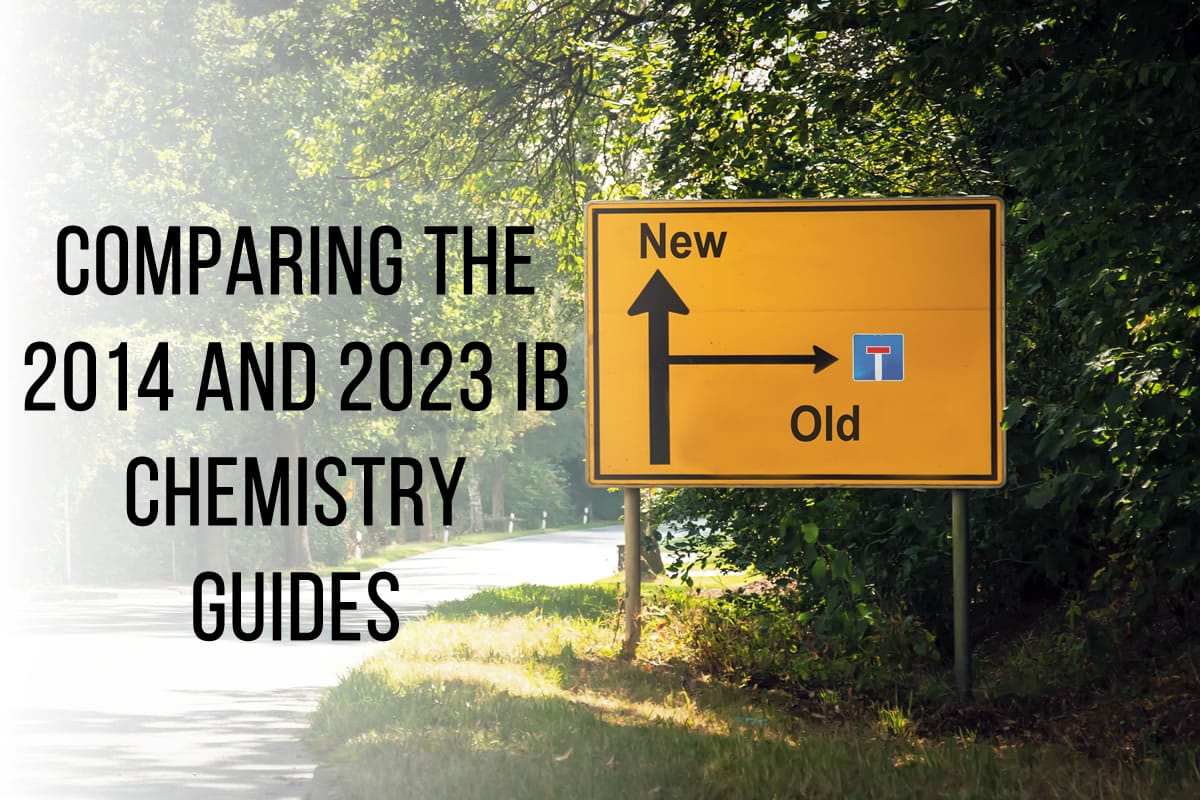
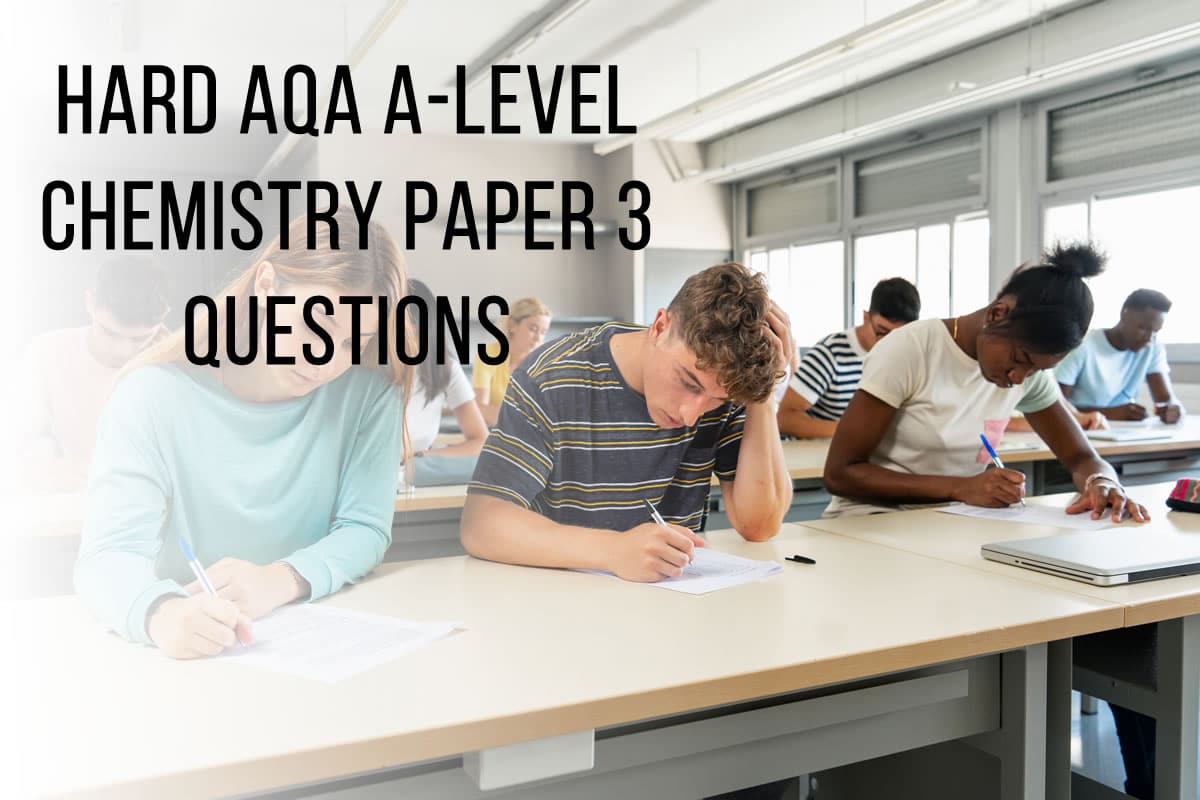
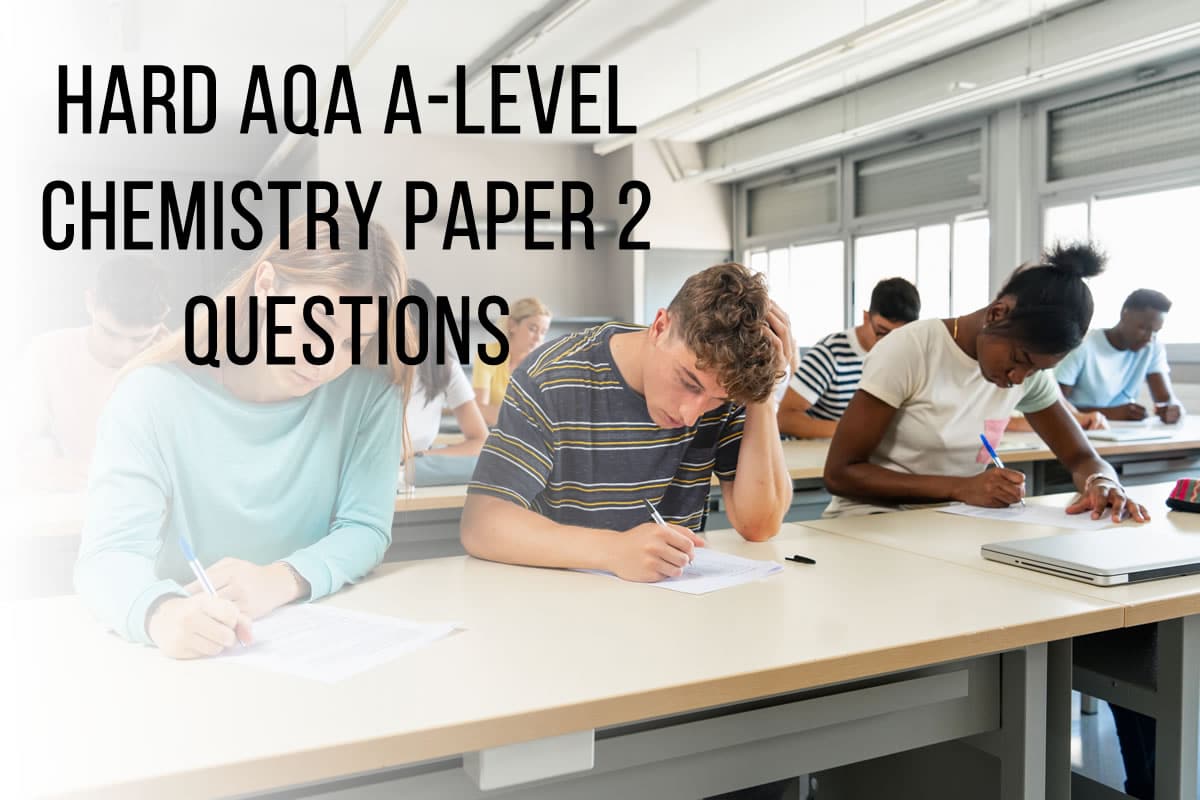
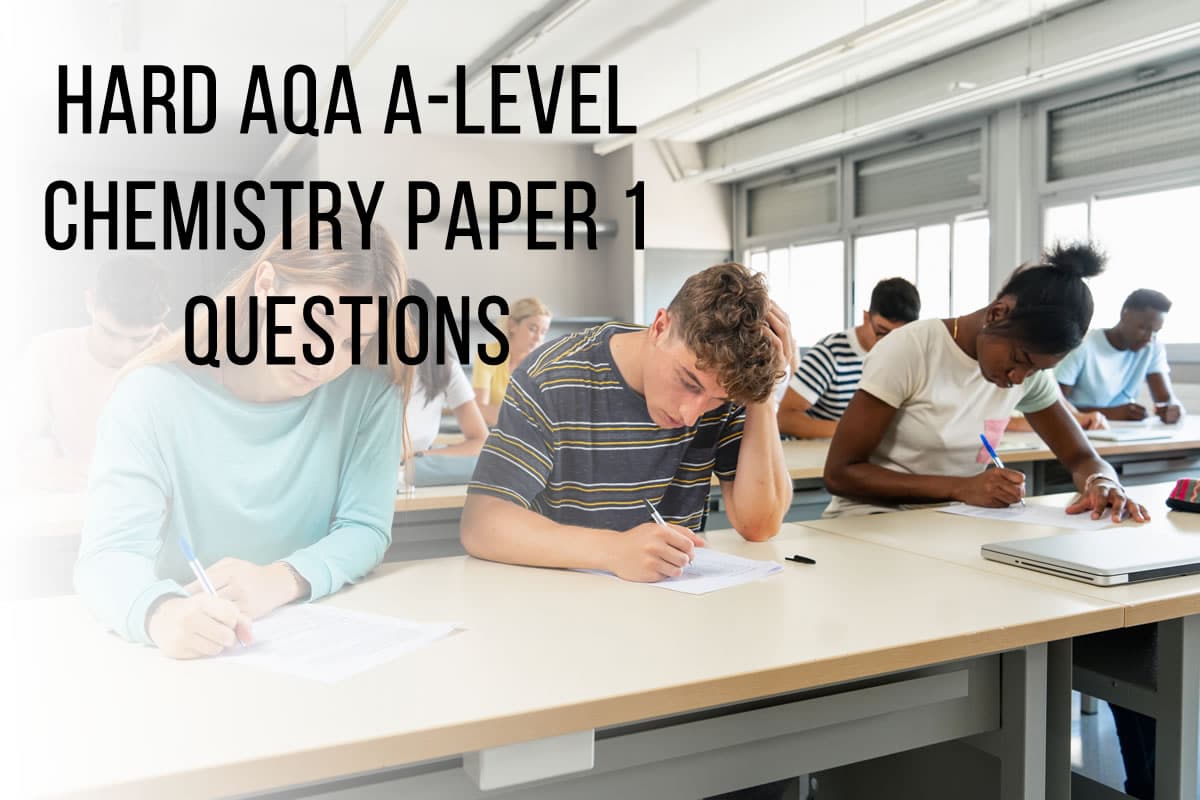

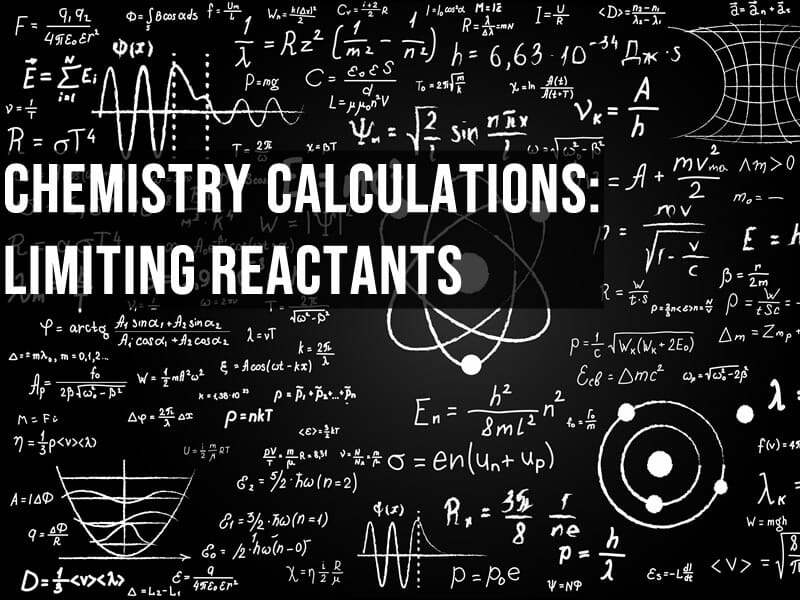
I agree to use the traditional approach by first laying and connecting the dots .
Thank you so much for this review. I am happy to see I am not the only one who does not like the new changes. Just hoping for the IB people to realize soon and go back to the linear and progressive normal order of units.
This has been extremely helpful. I completely agree with your comments. I intend on teaching the course as I have in the past. It’s nice to know I’m not the only one who felt this way about the new syllabus.
Hi, thanks for your feedback. You’re certainly not the only one – I’ve had quite a few teachers get in touch with frustrations about this new syllabus. Mostly asking the question….just why?!
Thank you for this review! As an IB Chem tutor I totally see your point about the integrated approach being forced here! I believe it was perfect when the syllabus was modular and it was the teacher’s role to show how all the modules are interconnected and make sure each module is understood well enough so that the knowledge can be applied in further topics. Now it seems like teachers will have to extract things out so that students can remember something in an orderly manner because the syllabus is now trying to make students “connect the dots” without laying the “dots” out first.
Hey Cezary, thanks for your feedback. Yes indeed, it’s a nonsensical approach at this level that just present students and teachers with an unnecessary headache! Your “dots” analogy is a good one. So many of the ‘linking questions’ in the new syllabus exist only to rebuild links that were naturally in place, and which have been broken by adopting this integrated structure-reactivity approach.
Thank you for this article! As an IB Chemistry SL teacher getting ready to teach the new syllabus for the first time this fall I’ve been searching for a comprehensive summary of the changes to the curriculum, and this is the best I’ve found! The College Board tried to do the integrated approach with their “Big Ideas” categories in a previous curriculum change, and they’re now going back to the more traditional approach. I can’t imagine a high school chemistry teacher trying to teach first-year chemistry students using the structure and reactivity categories – I will certainly teach my class the traditional modules in previous syllabi because it is easier for my students to comprehend. I can help them make the connections as we go and at the end-of-the-year review.
Many thanks for your feedback, Joe! Glad the article was of use.